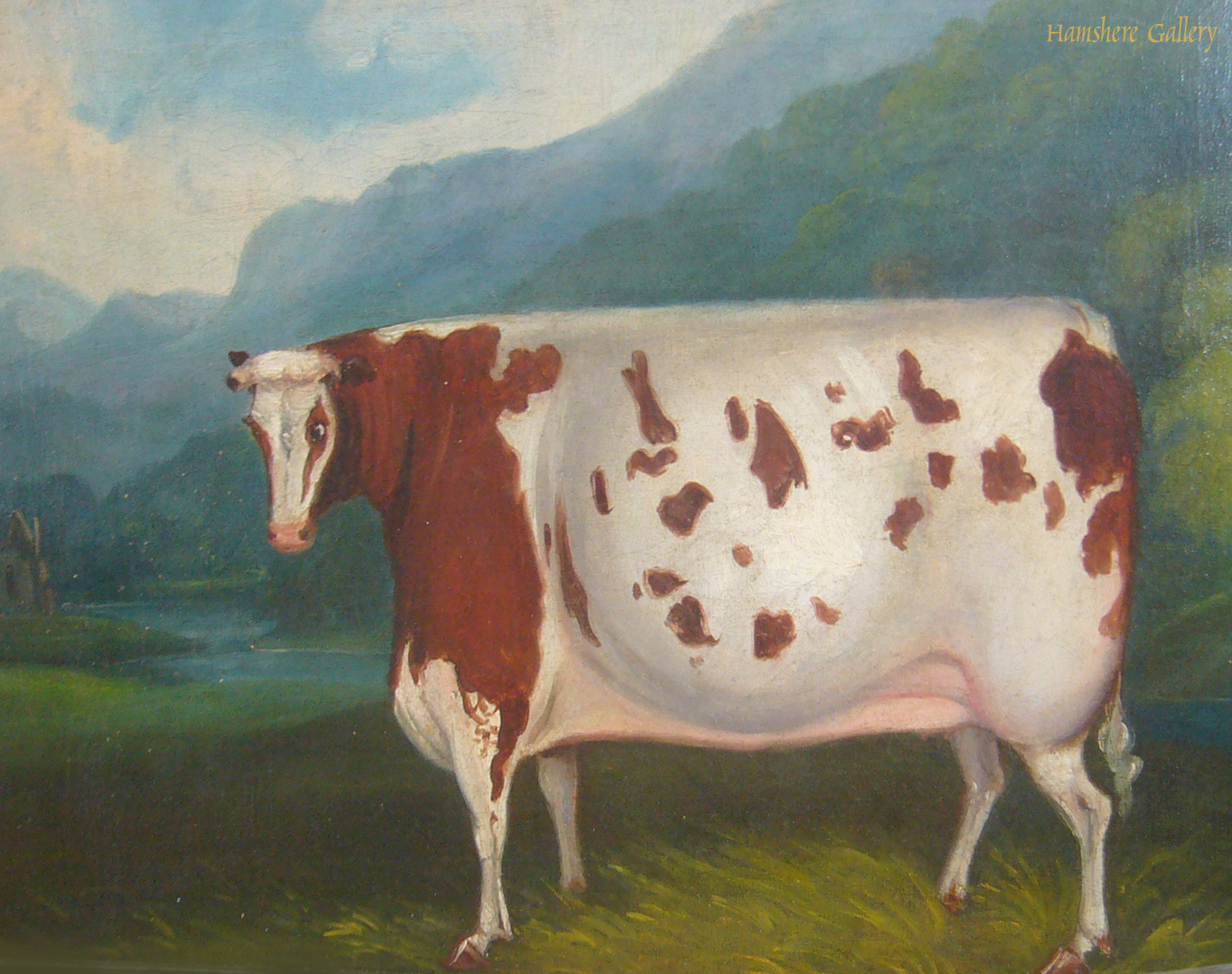 |
1 )
Mallards / ducks etching by George Vernon Stokes RA (English, 1873-1954)
An artist proof limited edition coloured dry-point etching of Wild Ducks & Drakes†by George Vernon Stokes, RA (English, 1873-1954). Coloured dry-point limited edition of 75, signed in pencil in the margin, “G Vernon Stokesâ€, and numbered “44/75â€. The reverse bears gallery label “David C. Brown Fine Art Dealer 482 Sauchiehall Street, Glasgow, C.2†and is inscribed in ink “Signed Proof Etching “Wild Duck & Drake†by G. Vernon Stokesâ€. English, circa 1930.
|
|
Paintings |
Farm Animal |
Artist: George Vernon Stokes |
Yr: 1930 |
|
|
 |
6 )
Oil on canvas of an oxen
Oil on canvas of the Durham Ox famous in the early 19th century for its shape, size and weight, and a early example of the Shorthorn breed of cattle. The Durham Ox was born in March 1796 and was bred by Charles Colling of Ketton Hall, Brafferton, near Darlington . In 1801 the ox was sold to John Day of Harmston, near Lincoln. Day renamed it the Durham Ox and had a carriage specially made to transport it, drawn by four horses. For the next five years it toured with him around England and Scotland, exhibited to the public at agricultural fairs and other events. It proved extremely popular. For most of 1802 the Durham Ox was on show in London. For more on the Durham ox See Farm Animal Portraits in Britain 1780-1900, by by Elspeth Moncrieff with Stephen and Joseph Iona published by the Antique Collectors' Club.
|
|
Paintings |
Farm Animal |
|
|
 |
12 )
Oil on canvas of the Durham Ox famous in the early 19th century for its shape, size and weight, and a early example of the Shorthorn breed of cattle.
Oil on canvas of the Durham Ox famous in the early 19th century for its shape, size and weight, and a early example of the Shorthorn breed of cattle.
The Durham Ox was born in March 1796 and was bred by Charles Colling of Ketton Hall, Brafferton, near Darlington .
In 1801 the ox was sold to John Day of Harmston, near Lincoln. Day renamed it the Durham Ox and had a carriage specially made to transport it, drawn by four horses. For the next five years it toured with him around England and Scotland, exhibited to the public at agricultural fairs and other events. It proved extremely popular. For most of 1802 the Durham Ox was on show in London,
For more on the Durham ox See Farm Animal Portraits in Britain 1780-1900, by Elspeth Moncrieff with Stephen and Joseph Iona published by the Antique Collectors' Club.
|
|
Paintings |
Farm Animal |
|
|
|